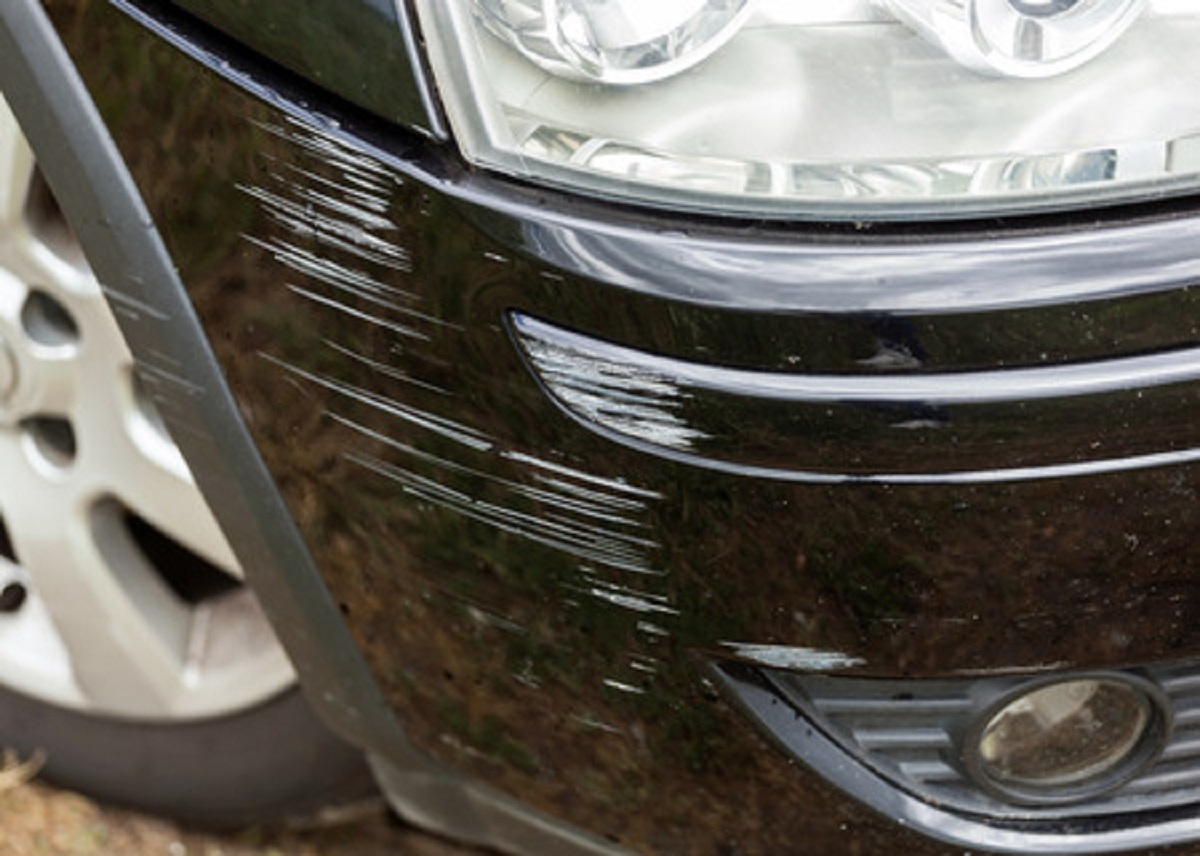With extreme weather conditions, debris, and general use, scratches and other imperfections are unavoidable for vehicles. However, depending on the paint job, there are ways to cover up different types of scratches in just a few steps.
Before you start attacking the scratch, you have to determine the paint job by the factory paint code. On most vehicles, this is shown via a sticker or a metal plaque under the hood or in the doorsill detailing the original paint. This will help you find the appropriate solution for a touch up.
Clear-Coat Scratches
There are several layers to every paint job, with the top one being the clear coat. Minor scratches to the clear cut can be dealt with accordingly. Clean the surface to remove dirt and debris. Mask nearby trim with tape, and then apply a small amount of polishing compound to a pad or cloth. Polish a small area, and after a couple dozen strokes, use a clean cloth to buff the area dry. Go slowly to avoid sanding through the clear coat, and check often to see if the scratch is still visible.
Base-Coat/Primer Scratch
If a scratch goes deeper than the clear coat, it’s hit the base coat and the primer. Clean the surface with a solvent to remove any wax or oils. Carefully add primer or color to the scratch, and let the paint sit overnight. With a sponge or rubber block, wet-sand with 600 or 1000 grit wet-or-dry sandpaper until the paint is buffed into the scratch.
Follow up with a polishing compound to put gloss back on the damaged area. Apply more paint and repeat until the scratch is filled and leveled. A final compounding should restore the shiny factory gloss finish, but don’t wax for 30 days to allow solvents to escape.
Touching Up
If you just repaired a deep scratch, apply clear coat. Ordinary clear enamel won’t work, so for spot repairs, it’s best to use an automotive paint instead. Before spraying a clear coat, clean the surface with a solvent to remove oils and wax.
Cut a dime size hole in a piece of paper for smaller blemishes to avoid over-spraying. Hold the paper several inches from the panel and practice spraying a light, dry coat through the hole. If the paper sags and begins to shine, you’ve sprayed too much. Let dry when you’ve finished.
Using your 600 grit or 1000 grit wet-or-dry sandpaper on a sponge or rubber block, sand off any excess. This will level the clear coat and avoid a quick buildup between coats. Compound the affected area to remove scratches. Repeat this process with at least two coats, and allow 24 hours between coats.
Think you or someone you know is in need of Behind the Wheel Training? Training Wheels is a Pomona driving school specializing in teaching new teen drivers how to stay safe on the road. For more information on our lessons, please click here.
Copyright: supergranto / 123RF Stock Photo

